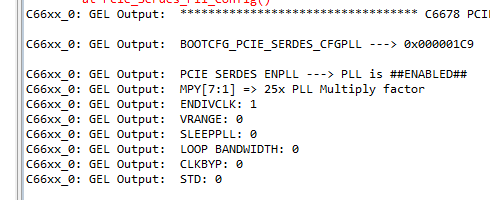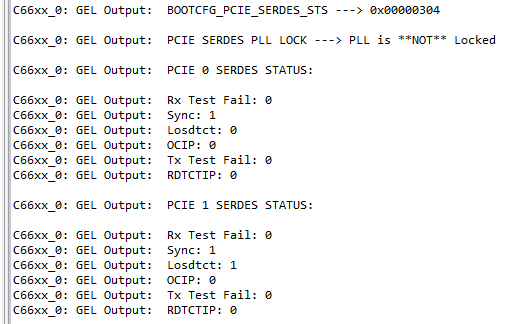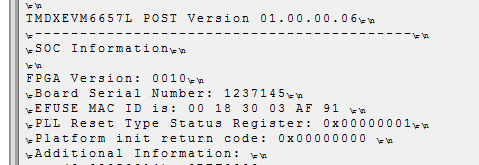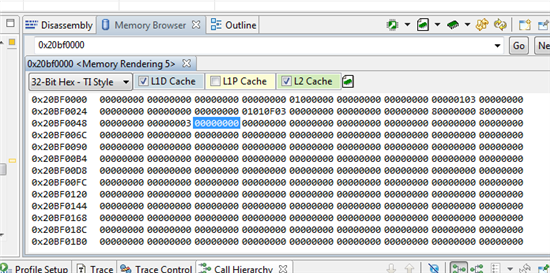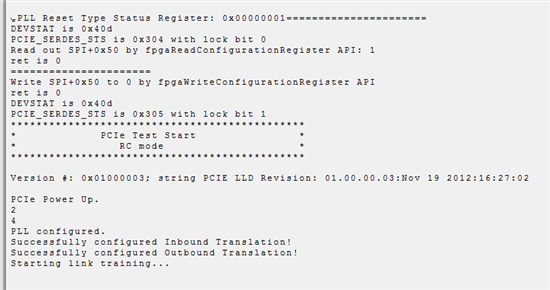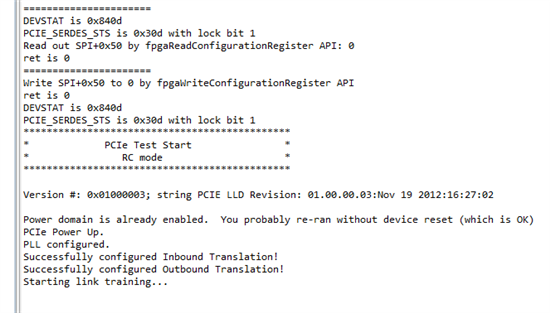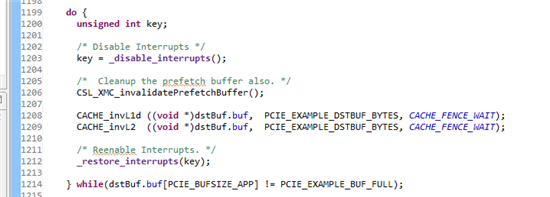hi,
I found out that PCIE_exampleProject just works fine (successful communication between EP and RC), when I boot the DSP via I2C POST boot in advance.
When I choose "no boot" or "ROM SPI boot" and load the PCIE_exampleProject.out afterwards the code will never leave
while (!lock)
{
CSL_BootCfgGetPCIEPLLLock(&lock);
}
. Even when I load the post_evmc6657l projects before to execute the booting process by hand I will have the same problem.
Any idea what part is missing to run the PCIE_exampleProject without booting in POST mode?
Regards, Gregor


